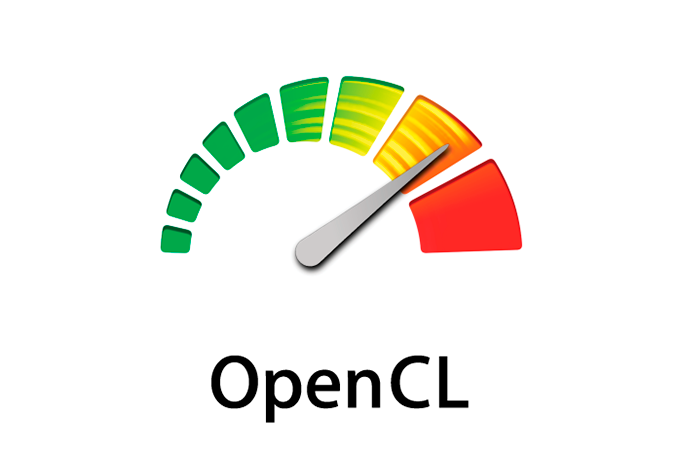Intel Releases OpenCL 1.2 Driver and Tools Update for Ivy Bridge and Haswell
by Rahul Garg on April 9, 2013 8:00 AM EST- Posted in
- GPUs
- Intel
- Ivy Bridge
- Haswell
- OpenCL

Intel has released an updated OpenCL driver for their 3rd Generation Core (Ivy Bridge) and 4th Generation Core (which we can safely call as Haswell) products that brings OpenCL 1.2 support on both the CPU and the GPU, moving a step up from OpenCL 1.1 in previous releases. The driver also implements better integration with both Direct3D and OpenGL. The driver is for Windows 7 and 8 only. Intel has also released an updated SDK along with the driver. The full release notes for the SDK release can be found here. Intel also supports OpenCL 1.2 on Xeon Phi.
Also of note, Intel has also recently updated their VTune Amplifier 2013 tool to add support for collecting GPU performance metrics in OpenCL applications running on Intel GPUs. Now it is possible to collect metrics such as utilization of the Execution Unit (EU) array and usage of on-chip local memory and cache of Intel HD graphics from within VTune. This will enable programmers to better understand the performance characteristics of their code on Intel GPUs, and thus will allow them to optimize their code better. According to an Intel forum post, for full GPU functionality VTune does require that the BIOS in the developer's machine support an option to collect performance metrics on the Intel GPU. This may be problematic for some developers. For example, I have a notebook with HD 4000 but was not able to enable some metrics because my notebook's BIOS does not have this option.
AMD has provided similar tools (such as CodeXL), as well as OpenCL 1.2 drivers for their GPUs for quite a while. Nvidia provides mature profiling tools for CUDA applications but their OpenCL tooling has been lackluster at best and Nvidia drivers remain at OpenCL 1.1. Overall it is good to see Intel continuosly upgrading their driver and tool support for GPU computing APIs.
Source: Intel










22 Comments
View All Comments
MrSpadge - Tuesday, April 9, 2013 - link
OpenCL is for computiong devices, not just GPUs. Hence the drivers don't need to "emulate a GPU", but rather just to return the results of the computations asked from them.mayankleoboy1 - Tuesday, April 9, 2013 - link
Check your facts. Intel openCL drivers emulate some instructions on the CPU that teh GPU cant do (because teh iGPU isnt fully OpenCL compliant).xdrol - Wednesday, April 10, 2013 - link
AMD actually has two OpenCL drivers: one for GPUs, another for CPUs. Intel has these two as well. And just a fun fact: Last time I've checked, AMD's CPU driver was actually faster on Intel CPUs than Intel's CPU driver.Pontius - Tuesday, April 9, 2013 - link
I do OpenCL development at home and absolutely love it. I always get giddy when I see OpenCL news. I will probably buy one of these new Intel chips, as well as an AMD GPU and experiment with running OpenCL programs on each. I'm currently working with an nVidia card and am happy with it, however it bothers the hell out of me how they are not so subtly snubbing OpenCL. They *need* to keep supporting it. If not, why are they on the OpenCL Khronos board?500MM - Tuesday, April 9, 2013 - link
"Support in dual adapter mode on Windows* 8: enables OpenCL workloads to be accelerated on Intel HD Graphics when the device is not directly connected to a display and fully enabled running Intel driver. "Is this a completely new feature, or is it an existing feature for Windows 7?
Oberoth - Tuesday, April 9, 2013 - link
Is OpenCL totally different to QuickSync?Are we over the days of QuickSync not working if you have another GPU on your PC? Back in the Sandy Bridge days QuickSync only worked when you had a monitor attached to one of its outputs, is this still the case with Ivy and Haswell?
I will be buying a Haswell set up when it's out but will also be using a dedicated GPU, will the GPU on the CPU still function? Will software like Handbrake and Prem Pro still have access to QuickSync and OpenCL on my Haswell CPU?
Also there is often concerns over quality from GPU assisted encoding, is this still the case with Open CL? What would be a better option (mainly quality but also speed) new upper mid-range AMD or nVidia card or sticking with QuickSync or disabling all GPU acceleration and purely using x86?
500MM - Tuesday, April 9, 2013 - link
QuickSync is a video encoder. OpenCL is a programming language. You can't really compare the two.Oberoth - Tuesday, April 9, 2013 - link
Thanks.Any idea what hardware a piece of OpenCL written software would use if i had both a Haswell chip and a modern AMD card in my system?
Goes the graphics chip on an Intel CPU get used if you have a dedicated graphics card installed?
Gigaplex - Tuesday, April 9, 2013 - link
It depends. Virtu MVP is licensed on a variety of motherboards and it allows running QuickSync on the iGPU while the system uses a dGPU. It's possible that it will also allow running OpenCL on the iGPU, but the dGPU will usually be much faster at it.xdrol - Wednesday, April 10, 2013 - link
Each device will show up in the OpenCL framework as a separate device - you will probably have 3 devides: the GPU, the iGPU and the CPU. Whatever the software selects, will get used.